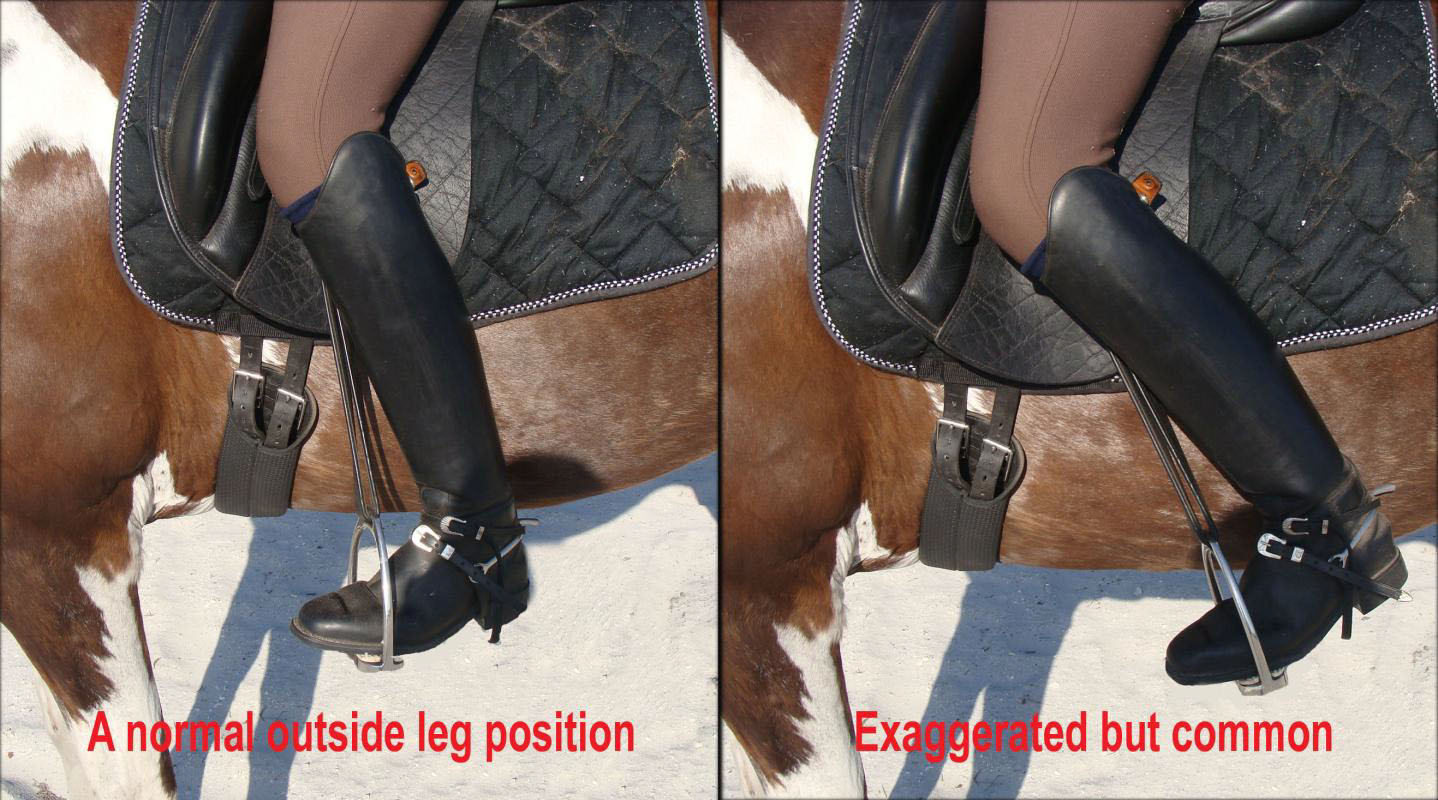(“She takes the leg that was already back BACK?”)
In DRESSAGE Unscrambled I mentioned the common tendency (big surprise) for riders to overuse the inside rein and to neglect the use of their outside leg, particularly when it should be enhancing the back-to-front connection. Here’s a corollary: much of the time when the outside leg is called for in the performance of a movement, riders place it too far back.
Why? My guess is that 1) they think they’re supposed to put it there, and 2) they don’t realize how much they’re exaggerating. Going back to another D.U. image, remember the tugboats maneuvering the 1950s’ ocean liner into its berth. The captain’s overview from the bridge let him position the tugs where they’d do the most good.
Here are some common examples where a misplaced outside leg doesn’t do you any good. In a turn on the haunches (and a canter pirouette) the outside leg needs to be far enough back to keep the quarters from escaping and to do its part in establishing the inner bend. But in both cases the bend isn’t supposed to be very much, and—remember—the primary goal is to get the forehand to come around the haunches. Your leg too far back not only doesn’t facilitate displacing the horse’s center of gravity, but it moves the hindquarters sideways, making the turn too large, and sliding the horse off the spot where it should be.
 In half pass, the leg too far back not only can make the haunches lead the movement, but it inhibits the horse’s free, fluid lateral flow. It’s the whole horse that you’re trying to move, not just the quarters; so the nearer it can be to the horse’s balance point, the less interfering it will be.
In half pass, the leg too far back not only can make the haunches lead the movement, but it inhibits the horse’s free, fluid lateral flow. It’s the whole horse that you’re trying to move, not just the quarters; so the nearer it can be to the horse’s balance point, the less interfering it will be.
Other instances are in the execution of canter departs and flying changes. How many times have you seen a rider on a 20-meter circle in the trot, her legs correctly positioned—inside at the girth, outside behind—and as she prepares to canter, she takes the leg that was already back BACK? And for what reason? Ya got me! Too far back makes the haunches swing. Too far back on some stallions and mares invades their “private space” and aggravates them unnecessarily. But beyond that, it just doesn’t help.
Trouble with the flying changes? Go back to a more basic exercise, and sharpen your horse to the aids you need—don’t swing your leg farther. This is even more critical when you start doing tempis. The farther you need to move your leg, the longer it takes. This can disrupt the rhythmical timing of the aids the movement requires or make you swing you leg faster which a lot of horses find unnerving.
In all these cases, when it comes to bringing your outside leg behind the girth—like visits from Uncle Jack, Aunt Mary and all the kids—a little goes a long way!
